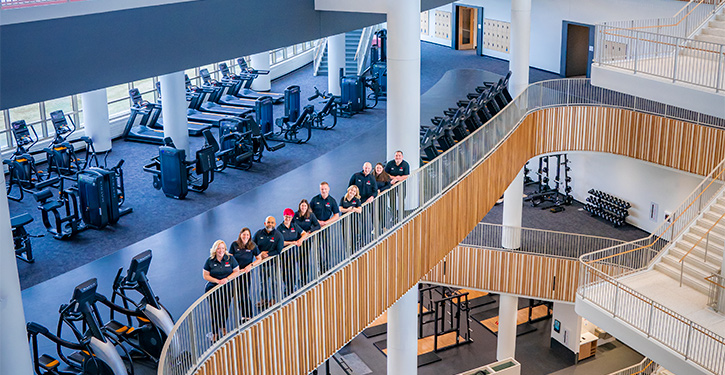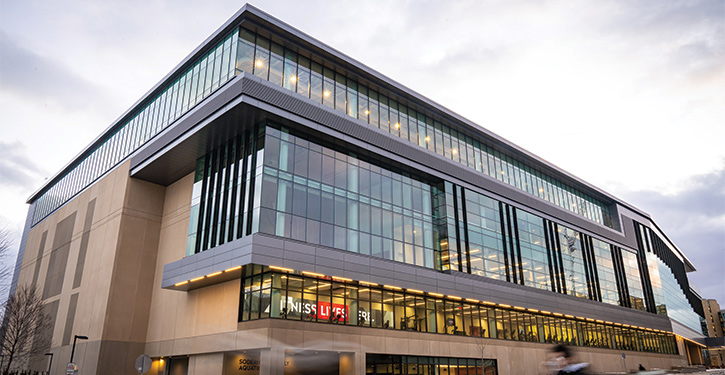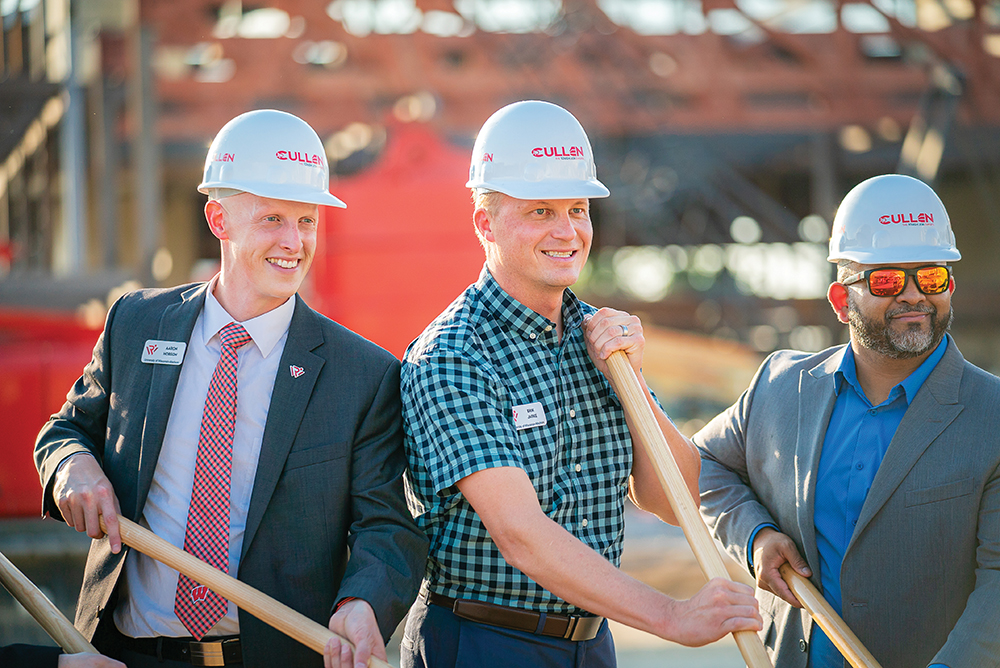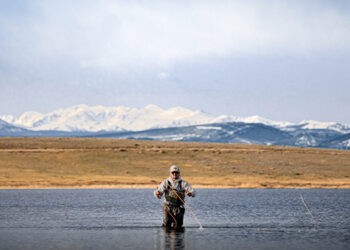The best and worst thing that ever happened to Recreation & Wellbeing at the University of Wisconsin–Madison (UW–Madison) took place in 2010.
A referendum to expand up and over the top of the existing Natatorium was voted on by students — who are also affectionately called Badgers after the school mascot. However, the referendum failed miserably.
“When speaking with the students after the referendum failed, they didn’t feel like it was robust enough,” shared Aaron Hobson, the director of Recreation & Wellbeing. “They wanted us to think more holistically in terms of how we could deliver recreation on this campus.”
After that, the student government gave the department $100,000 to conduct a study to evaluate all the current recreation facilities. From the in-depth study evolved a master plan with six projects, four of which went to another referendum in 2014 for $236 million, of which no more than 57% would be funded through student segregated fees. All in all, the plan looked to improve recreation and well-being on a broad scale at UW–Madison.
It passed with flying colors. “In fact, it was the referendum that had the highest turnout of all time on this campus — 87% of students voted to pass the referendum,” said Hobson. “The students overwhelmingly supported it and wanted to see it happen.”
The plan was for two outdoor projects to flank two large indoor facility projects. First, the campus saw the completion of the Near West Fields, the department’s first synthetic turf field furnished with the Mondo FTS Turf System with Ecofill. Sadat Khan, the senior associate director of Facility Planning and Operations, said they witnessed an increase of participation by over 40% within the first year it opened.
EXTRA CREDIT: A quick look at campus recreation projects across the country.
“The synthetic turf allowed us to extend seasons, add more teams and crown more champions because of its superior ability to drain water and not create mud,” said Khan.
The Nicholas Recreation Center (Nick) was taken on by Workshop Architects and HOK, opening in September 2020. Boasting 30,000 square feet of fitness space, students can find access to a plethora of equipment choices, from Woodway and Concept2 cardio pieces to strength options from Matrix and Eleiko. Plus, there are eight full-size, multipurpose courts, five multipurpose studios, a competition pool and diving well, turf movement areas, and more. It’s a space to be reckoned with.
And now the Bakke Recreation & Wellbeing Center, a brand-new facility by Kahler Slater and HOK, opened in April 2023. This has brought an innovative and well-being focus to the entire campus.
Bakke will offer a multitude of features, some that won’t be found anywhere else:
- A teaching kitchen.
- Spaces dedicated to support mental health.
- An indoor climbing and bouldering wall.
- Sport simulators.
- Spaces to rejuvenate like training rooms with live plant walls and nap pods.
- An ice rink.
- Multipurpose studios.
- An indoor jogging track.
- Eight multipurpose courts.
- A 25-yard recreational pool.
There will also be a rooftop fitness area that will allow for outdoor functional training, plus the ability to hang hammocks and slackline.
“Getting to be in the building and seeing how students and the campus community thrive in the new space is very exciting,” said Abby Diehl, the associate director of Wellbeing.
Beyond the Physical Amenities
But the amazing amenities aren’t the only thing the UW–Madison staff are excited about with the opening of Bakke. “I am most excited for the opportunity it provides our staff,” said Khan. “We finally get to share with students what we have been pushing toward for over 10 years. While we opened an incredible facility in 2020 — the Nick — it was a piece to the overall puzzle. The Bakke allows us to fully launch programs and services that let us fulfill our vision of improving the health and well-being of the Madison community.”
The physical changes of the department and the excitement that surrounds those is just a further effect of the internal change that took place in 2018. That year, Recreational Sports rebranded to Recreation & Wellbeing.
“We felt we needed to change our moniker to be outward facing of who we were and how we were serving students,” said Hobson. “We knew at the time we were serving our students in much more than just the physical domain of well-being or wellness. So, we wanted to put it out there we were going to lean deeper into other dimensions of well-being as well.”
Beyond the new dedicated well-being spaces, one of those avenues of diving deeper into well-being has been Wellness Coaching. Students go through rigorous training to become wellness coaches. Training includes the NASPA-certified peer educator course, motivational interviewing and how to refer participants to other campus resources. Coaches spend time helping their peers set goals around wellness, give accountability and create a safe place for students.
EXTRA CREDIT: At Ohio University, Well-Being Coaching is making an impact.
In fact, Diehl shared two testimonials from the program:
“I have learned so much from this position. It has helped me understand my own well-being and it has even helped me when I am helping friends. It has given me a feeling of purpose,” said a coach in the Wellness Coaching program.
“I learned a lot of people have/are going through similar things as I am, and it’s totally normal to feel certain ways. Another big takeaway for me was everything is about balance, but it can look differently at different points in time,” said a Wellness Coaching participant.
In addition to programming, whether it’s Wellness Coaching or 30-minute mediation sessions over lunch the staff has shifted its mindset as well. What this means is everyone is part of the Wellbeing team.
“Here’s what this looks like in practice,” said Diehl. “You could see combo classes being taught such as a tennis lesson with a portion about nutrition while training, or a yoga class with an emphasis on practicing gratitude and setting boundaries, or an esports tournament with education on healthy sleep habits. The work will become more imbedded in what we already do.”
For the Badgers of the Past, Present and Future
The fact is what UW–Madison Recreation & Wellbeing already does is serve students to its utmost ability. Hobson shared from the beginning they asked students what they wanted in this master plan. More space and openness were the resounding answers. However, they also asked for the project to be economical and financially well put together.
It was something the team considered and acted on, notably when the referendum passed. “We committed to the students we were not going to charge them or increase their segregated fees until they had access to each of [the new facilities part of the master plan],” explained Hobson. “Their segregated fee will grow incrementally.”
Just as Recreation & Wellbeing desired to take care of the Badgers of the past, those same students looked to take care of the Badgers of the future. Hobson noted they were setting the stage for the future of Recreation & Wellbeing at UW–Madison — a future he and his team are seeing come to fruition.
While one project remains — the Near East Fields — the opening of the Bakke Recreation & Wellbeing Center is another step further into the new era of wellness at UW–Madison.
Sure, Hobson noted the only consistent things over the past 10 years have been wearing construction hats and a constant state of change, but it’s been more than worth it. What UW–Madison has been in the process of creating is an impact that will last beyond many generations of Badgers to come.
“Our motto right now is we’re building more than a building,” explained Hobson. “We’re building a movement — one that focuses on holistic well-being. While these spaces are important to our future, it’s what happens inside of them. It’s the connections we make. It’s the services we provide. Those are really the future.”













